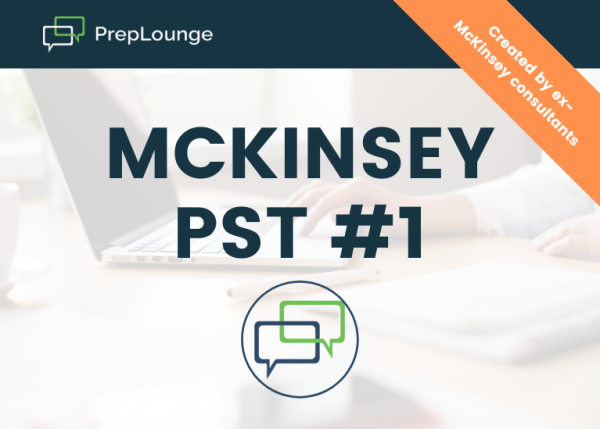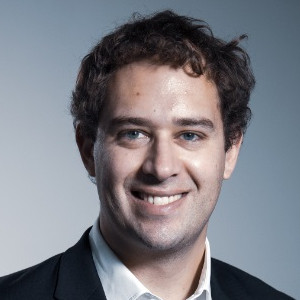I got a tough McK style case: How would you improve ecological implications from forest fires in California
Overview of answers
-
Upvotes
-
Date ascending
-
Date descending
Hi,
First of all you need to ask clarifying questions that would help you clarify the problem.
Aims: What are the success criteria for improving the ecological impact? Any particular benchmark? Do we have any deadline?
Constraints: do we have any budgetary/ any other constraints that we need to take into account?
External factors: do we know any external factors that we need to take into account?
Now let’s choose a framework type for this case:
- conceptual/ business situation frameworks do not fit
- numerical frameworks could potentially fit, but I am not sure we could have the required depth here
- value chain/ process framework - perfectly fits
Here is how I would structure the problem:
1) Fire prevention (aim is prevent as many fires as possible)
- human related cases (regulations; education)
- nature ralated causes (drought - use predictive analytics tools, lightning strikes - build lightning rods)
2) Fire extinguishing (aim is to supply quick response and reduce the sq miles of fire as much as possible)
- fire detection (e.g. use satellites; aviation; ground patrol)
- fire localization (e.g. use mounds and other fire barriers)
- fire elimination (e.g. use of aviations and ground forces)
3) Elimination of the consequences of a fire (aim is to get rid of consequences from fires as much as possible)
- land related
- forest related
- animals related
The trick is to create a structure that would be MECE and deep. And then you can leverage brainstorming techniques to create solutions for all areas in this structure. I fulfilled a few examples.
Hope it helps!
Best,
Anton
Great case!
I'd approach it as follows:
- Objectives: You need to ask questions to understand what you're optimizing for, or rephrased: What does ecological implications mean? Are we talking loss of biodiversity, loss of carbon sinks, air pollution, etc?
- Approach: You'll need a framework for how to tackle the problem. There are many different ways to look at this, but I would probably use avoidance, reduction & restoration as a first MECE structure:
- Avoidance: Reduce the frequency of fires, e.g. tacke climate change, increase education on behavior in the forest, force utilities to reduce sparks from power lines, etc
- Reduction: Reduce damage of fires that do break out (e.g. improve early warning systems, optimize fire fighter operations, make sure they have right equipment, establish processes for cross-state support)
- Restoration: Optimize steps to restore destroyed land (e.g. reforestation with plant species that are less prone to dry out if that exists, plant fast-growing plants, measures to restore habitat, etc.)
Based on these, you can then dive into details and assess viability of each, prioritize measures, etc.
Hello!
Important to clarify that this seems very weird to be a McK case, to be honest. You can get some of these conceptual questions in a partner round, but not this vague.
In any case, before thinking of an approach, it would be key to problem-solve with the interviewer to understand the specific target asap, since as per now it´s too wide.
Good luck!
Cheers,
Clara
I love it - questions that actually require your to think!
Related Products
McKinsey Solve Game Simulation Package by Francesco
- Play for Real the Ecosystem Game (Coral Reef & Mountain Ridge)
- Play for Real the Redrock Game (All 4 Phases Included)
- Receive for FREE the Imbellus Solve Combo and McKinsey Imbellus Game Secrets Guide
Break Into Consulting - Strategy Consulting Firm's All-In-One by Alexandre
- Created by 2 BCG consultants
- Covers most strategy consulting firms
- Get you to the backstage of the strategy world
Break Into Consulting - Industry Overviews by Alexandre
- Created by 2 BCG consultants
- 15+ industries covered
- Practical tips to master any industry
Break Into Consulting - Frameworks I wish I knew by Alexandre
- Created by 2 BCG consultants
- Covers most interview cases
- Practical tips to crack the case
BCG Online Case Combo: Software Simulation by Francesco
- Practice with 6 Chatbot Tests (Casey Style), including 4 Software Simulations
- Test Yourself with 4 Live One-Way Video Interviews (with AI Generated Tips)
- Receive for Free the BCG Online Case Secrets Guide
BCG Online Case Secrets by Francesco
- Master the 5 Types of Questions Asked by the Chatbot
- Discover the Exact Steps to Prepare for the 1-Minute Video Assessment
- Prepare in Advance by Solving 2 Complete Chatbot Cases
Imbellus Solve Combo: Guide + Videos by Francesco
- Watch how to Crack the Ecosystem Game in 23 Minutes
- Find Out how to Master each of the 4 Phases of the Redrock
- Receive for FREE the McKinsey Imbellus Game Secrets Guide
Imbellus Test at McKinsey – Guide by Luca
- Detailed and full game analysis
- Hands-on example to solve the game and support you
- Practical tips to crack the game
McKinsey Imbellus Solve Game Secrets by Francesco
- Learn the Exact Steps to Crack the 6 Games of the Imbellus
- Discover the Proven Way to Master the 5 Skills Tested in the Game
- Create your Ecosystem Chain Automatically with the Automated Excel Included
The Secret McKinsey PEI Cheat Sheet by Robert
- Learn how to correctly prepare and structure your McKinsey PEI
- Impress your McKinsey interviewer with a perfect PEI
- Save tons of time in your PEI prep
Integrated FIT Guide for MBB by Clara
- Combines key concepts review and a hands-on methodology
- Contains printable worksheets to prepare your stories
- Includes 20+ real examples and 50+ practice questions
BCG Potential Test #2 by Gaurav
- BCG Potential Test with 23 questions about "World Electrification Case"
- Created by ex-MBB interviewer Gaurav
- Format and style for a real test experience
BCG Potential Test #1 by Francesco
- BCG Potential Test with 23 questions about "CoverCell Case"
- Created by ex-BCG consultant Francesco
- Format and style for a real test experience
Prep Guide for McKinsey PST by PrepLounge
- McKinsey PST preparation guide incl. 13 pages of useful tips
- Created by ex-McKinsey consultants
- Detailed information on test structure, question types & core skills
McKinsey PST #3 by Riccardo
- PST with 26 questions about "Delicious Juice Case"
- Created by ex-MBB consultant Riccardo
- Industries: Beverage, tourism, pharma
McKinsey PST #2 by Gaurav
- PST with 26 questions about "WeKlin Case"
- Created by ex-McKinsey consultants
- Industries: Retail, energy, franchise
McKinsey PST #1 by PrepLounge
- PST with 26 questions about "FloraFashion Case"
- Created by ex-McKinsey consultants
- Industries: Retail, energy, franchise
Related Cases
Related Case Interview Basics article(s)
McKinsey Growth Pyramid
Structured framework for sustainable corporate development, including market penetration, product development, market development and diversification.
McKinsey Imbellus Game
Find out what the McKinsey Imbellus Game is all about. Get specific insights on how to ace your case interview at McKinsey.
Bain Sova Test
The Bain Sova Test is an aptitude test for applicants to Bain & Company. The test consists of 4 areas and is used at Bain for job interviews in consulting.
7S-Framework of McKinsey
Discover what McKinsey's 7S framework is and how it helps companies maximize their strengths and identify weaknesses while focusing on 7 internal elements.
BCG Online Case
Get to know the BCG Online Case and learn how to approach this specific Boston Consulting Group Test when you want to start your careere in Consulting.
Related Products

McKinsey Solve Game Simulation Package by Francesco

Break Into Consulting - Strategy Consulting Firm's All-In-One by Alexandre

Break Into Consulting - Industry Overviews by Alexandre

Break Into Consulting - Frameworks I wish I knew by Alexandre
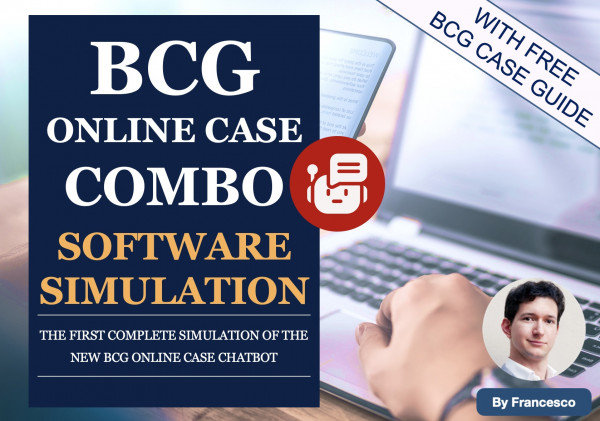
BCG Online Case Combo: Software Simulation by Francesco
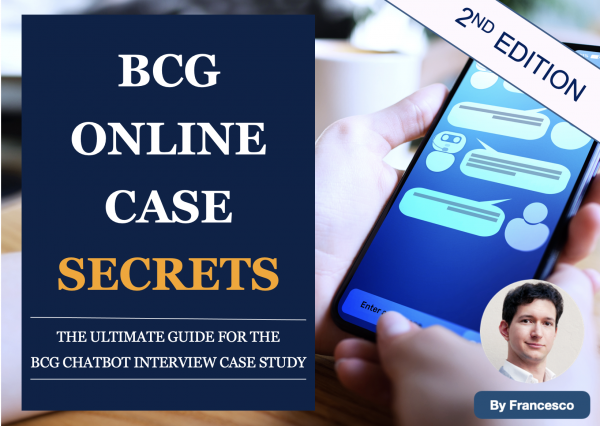
BCG Online Case Secrets by Francesco

Imbellus Solve Combo: Guide + Videos by Francesco
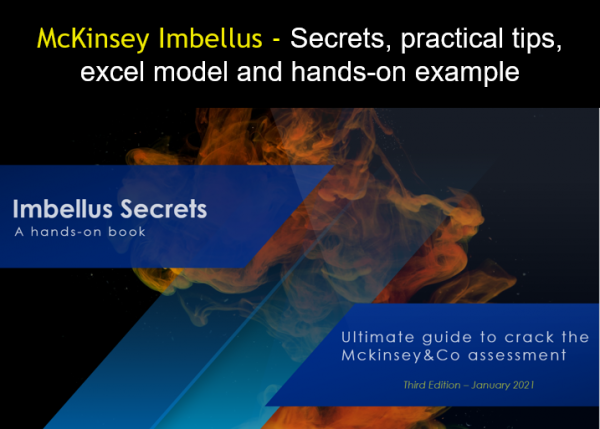
Imbellus Test at McKinsey – Guide by Luca
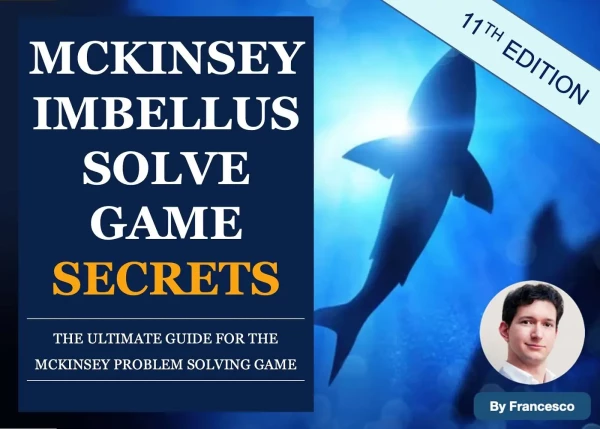
McKinsey Imbellus Solve Game Secrets by Francesco

The Secret McKinsey PEI Cheat Sheet by Robert

Integrated FIT Guide for MBB by Clara
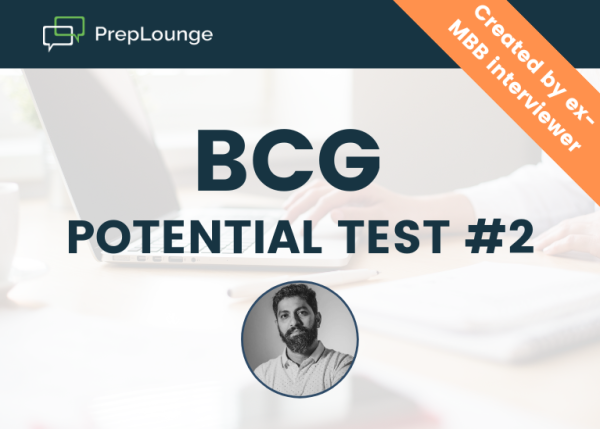
BCG Potential Test #2 by Gaurav
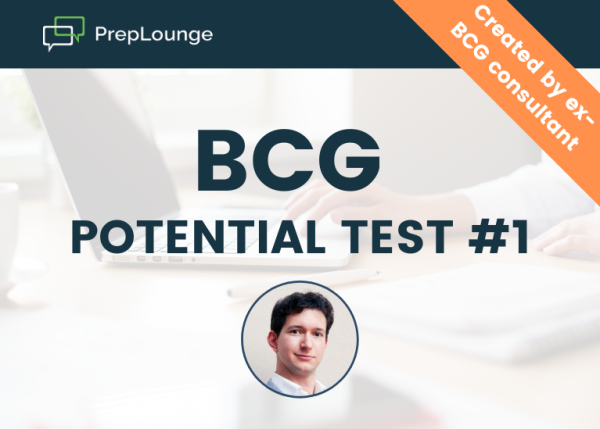
BCG Potential Test #1 by Francesco
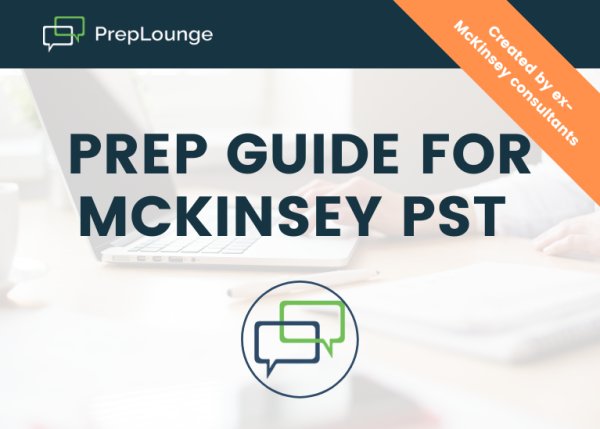
Prep Guide for McKinsey PST by PrepLounge
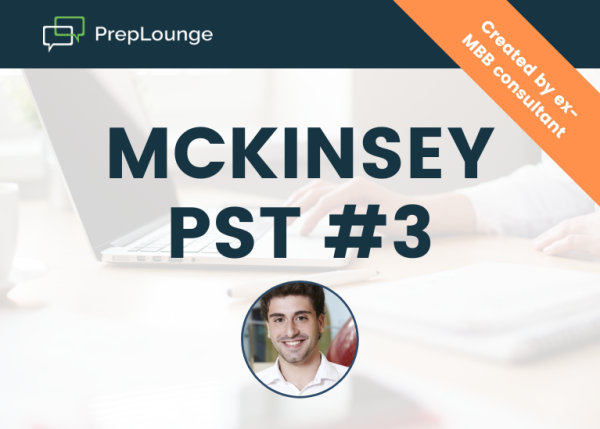
McKinsey PST #3 by Riccardo
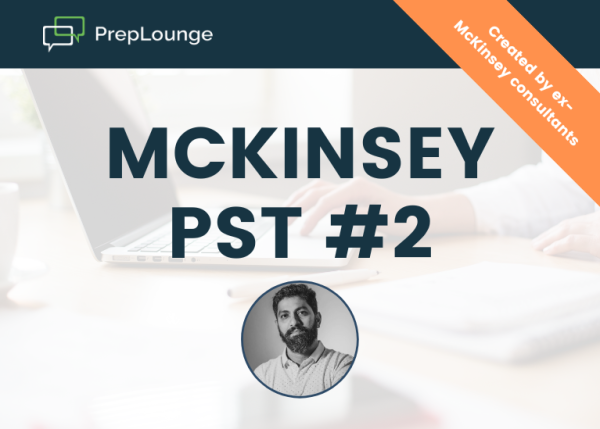
McKinsey PST #2 by Gaurav
